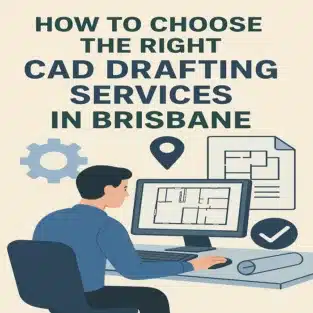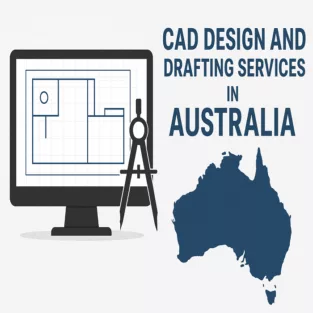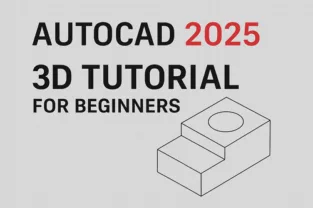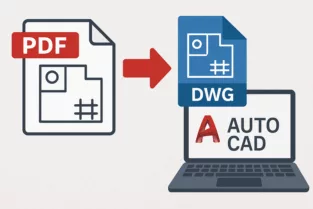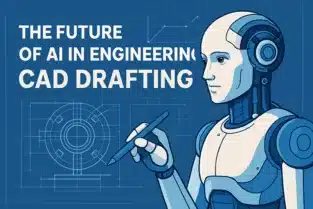In today’s fast-paced construction and design industry, choosing the right CAD drafting services in Brisbane can significantly impact the success of your project. Whether you’re planning a residential build, a commercial development, or even a renovation, the right draftsman in Brisbane can turn your vision into a precise, practical design.
With so many providers offering various levels of expertise and services, how do you pick the right one? This guide will walk you through what to look for, what to avoid, and how to ensure you’re making a smart investment in your project’s future.
What Are CAD Drafting Services?
CAD (Computer-Aided Design) drafting services use specialized software to create precise technical drawings and plans used in construction, engineering, and manufacturing. In Brisbane, CAD drafting is essential for ensuring that all stakeholders—builders, architects, engineers, and clients—are aligned on a project’s technical details.
Why Choosing the Right Draftsman in Brisbane Matters
A draftsman in Brisbane doesn’t just draw; they translate your ideas into detailed drawings that meet local building codes, environmental regulations, and council requirements. A poor-quality drafting service can result in delays, costly revisions, or even legal issues.
Choosing the right professional ensures:
- Accurate, council-compliant drawings
- Efficient project timelines
- Clear communication between all parties
- Reduced risk of errors during construction
1. Check Qualifications and Experience
Not all draftsmen are equal. When selecting CAD drafting services in Brisbane, look for providers with:
- Formal qualifications in drafting or building design
- Experience in your project type (residential, commercial, industrial)
- A portfolio of completed projects in Brisbane or nearby suburbs
Experienced draftsmen understand local regulations and have established relationships with Brisbane city council and other approval bodies.
2. Ask About Software and Technology
Modern drafting is powered by advanced CAD software such as AutoCAD, Revit, or ArchiCAD. The right CAD drafting services will utilize up-to-date software to ensure accuracy and compatibility with other consultants (architects, engineers, builders).
Ask the service provider:
- What software do you use?
- Can you provide 2D and 3D drawings?
- Do you offer Building Information Modeling (BIM) integration?
3. Look for Local Knowledge
A draftsman in Brisbane should be familiar with:
- Local building codes and council regulations
- Climate considerations in Queensland (e.g., heat, storms, ventilation)
- Design trends and materials suitable for Brisbane homes or commercial spaces
This local expertise can save you time and money by avoiding non-compliant designs or unnecessary revisions.
4. Compare Pricing and Inclusions
Price is important—but so is value. Some CAD drafting services may seem cheaper, but they may not include everything you need, such as:
- Site visits
- Council application assistance
- Engineering coordination
- Revisions
Request a detailed quote that outlines:
- What’s included and excluded
- Number of revisions allowed
- Timeframe for delivery
Avoid services that are vague or unwilling to provide a written quote.
5. Check Reviews and Testimonials
Reputation matters. Look for client reviews on:
- Houzz
- Local directories (e.g., Yellow Pages, TrueLocal)
Positive reviews indicate reliability, quality, and good communication. If possible, ask the company for references or examples of past projects similar to yours.
6. Ask About Turnaround Time
Time is critical in any project. Ask:
- How long will the drafting process take?
- When can you start?
- What happens if I need changes?
A reliable draftsman in Brisbane will be upfront about their availability and process timelines, and they’ll communicate delays if they occur.
7. Ensure Clear Communication
The best CAD drafting services will:
- Keep you updated regularly
- Explain technical terms clearly
- Be responsive to your questions
Good communication reduces misunderstandings and ensures your design vision is accurately captured.
Final Thoughts
Choosing the right CAD drafting services in Brisbane is a critical step in the success of your building or renovation project. By assessing qualifications, local knowledge, technology use, and communication skills, you can ensure your project starts on solid ground.
Don’t rush the decision. Take time to review portfolios, ask questions, and compare offerings. The right draftsman in Brisbane will not only save you time and money but also turn your vision into reality with clarity and precision.
What’s the difference between a draftsman and an architect?
A draftsman focuses on technical drawings and construction documentation, while an architect is trained in design theory, aesthetics, and complex building concepts. Draftsmen are generally more affordable and ideal for straightforward residential or commercial projects.
Are CAD drafting services in Brisbane council-approved?
Not automatically. However, experienced drafting services are familiar with Brisbane City Council requirements and can prepare drawings that comply with local regulations. Some may even assist with the application process.
Do I need a draftsman for home renovations?
Yes, especially for structural changes, extensions, or council submissions. A draftsman in Brisbane will ensure your plans are accurate and compliant.
Can I use a draftsman instead of an architect?
For most residential and small commercial projects, yes. Draftsmen offer a cost-effective alternative, especially when architectural design isn’t a priority.
